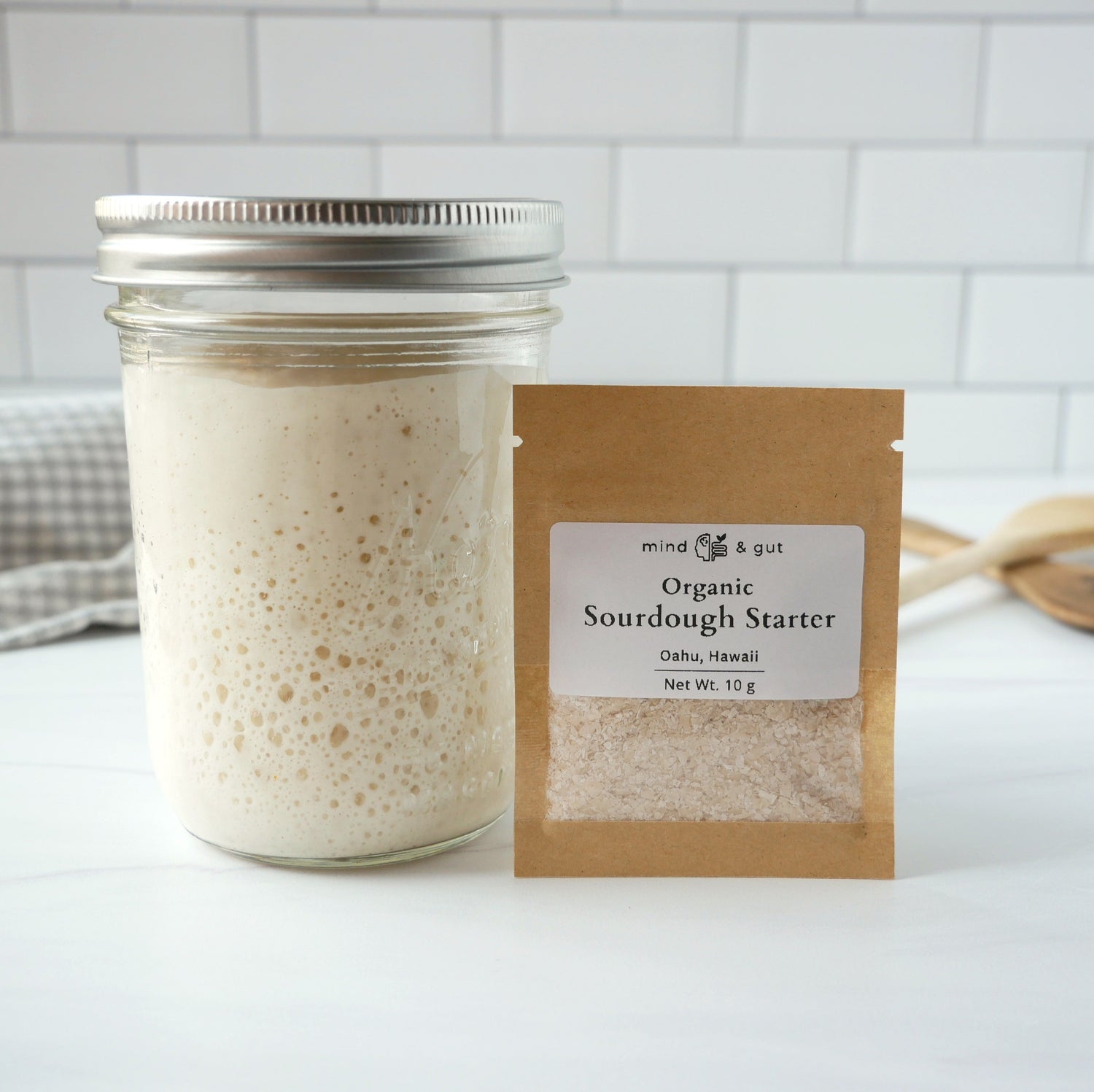Sourdough Starters in Hawaii’s Tropical Climate
Established sourdough starters are pretty resilient but maintaining one in a humid climate may require some extra attention. Regular feedings, maintaining cleanliness, and controlling the environment are crucial. In Hawaii, the warm temperatures (75-85°F) and high humidity can cause sourdough starters to ferment quickly. This can lead to a more acidic starter and a higher risk of mold if not managed properly. Here are some tips for keeping your sourdough starter healthy and thriving in a humid climate.
Managing Temperature and Humidity
-
Refrigeration: If you’re not baking daily, store your starter in the refrigerator. This significantly slows down fermentation, reducing the need for frequent feedings. In the fridge, feed your starter at least once a week. Let the starter sit out for an hour after feeding, then put it back in the fridge.
If you do bake daily, store your starter in the coolest part of your kitchen and feed once or twice daily. - Avoid Heat: Keep your starter away from a heat source (oven) and direct sunlight.
Proper Container and Covering
- Glass or Plastic Containers: Use a non-reactive container like glass or BPA-free plastic. Avoid metal containers as they can react with the acidity of the starter.
-
Cover: Cover your container loosely with a secured lid. Make sure the lid on your starter jar is not too tight. The starter will start to release gas and a tightly sealed container could burst. Tighten the lid all the way shut, then turn it back half a turn. The goal is to allow the gases to be released but also keep bad bacteria from getting in.
(Do not use a cloth or paper towel as a lid. This could be a breeding ground for mold.)
Cleanliness is Key
- Regular Cleaning: Clean your starter’s container regularly. Transfer your starter to a fresh, clean container once a week during your feedings.
- Avoid Cross-Contamination: Ensure all utensils and surfaces that come into contact with your starter are clean and dry.
Hydration Levels
- Thicker Starters: In high humidity, a thicker starter (more flour, less water) can be less prone to mold. Aim for a paste-like consistency rather than a batter-like one.
-
Adjusting Consistency: For starter: If your starter becomes too runny, add a bit more flour to thicken it up. This may also slow down fermentation slightly, giving you more control.
For dough: When the air is humid your dough will absorb more water from the air around it. Experiment by reducing the water in your sourdough recipe to ensure that you don't end up with a sticky, messy dough.
Fermentation and Rise Times
- Fermentation Time: At 75-85°F, your starter can become active and bubbly in as little as 4-6 hours after feeding. Monitor your starter closely to prevent it from becoming overly acidic, which can occur more rapidly in warm conditions.
- Dough Rise Time: When making dough, expect it to rise much faster than in cooler climates. A typical bulk fermentation that might take 8-12 hours elsewhere could be ready in 4-6 hours in Hawaii. To manage this, consider using the fridge for bulk fermentation. Let the dough rise at room temperature until it has increased in size by 30-50%, then transfer it to the fridge to slow fermentation. The longer the cold fermentation, the more "sour" your bread will taste.
Storing Dough Overnight
- Risk of Overproofing: If you leave dough on the counter overnight in Hawaii, be prepared for a very active fermentation. Dough left out overnight can easily overproof, resulting in a weakened gluten structure and a flat, dense loaf. To avoid this, store your dough in the refrigerator overnight if needed.
Spotting and Handling Mold
- Identifying Mold: If you see any mold, it's best to discard the starter entirely and start over to prevent health risks.
Backup Plan
- Extra Dehydrated Starter: For an extra precaution, have some extra dehydrated starter on hand and keep it stored in an airtight container as a backup. Things happen, and it can be a life saver to have some extra in case of a disaster.

